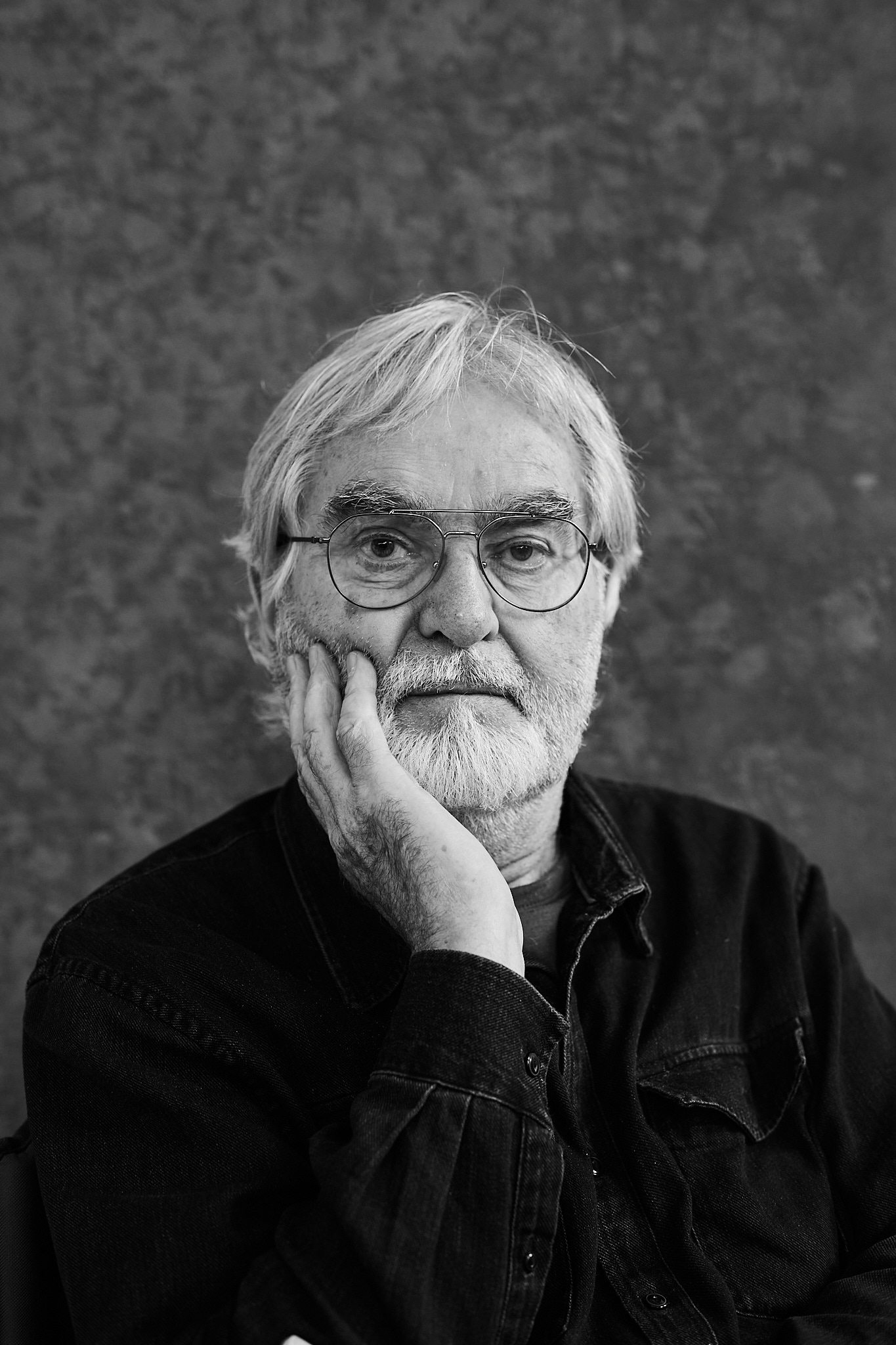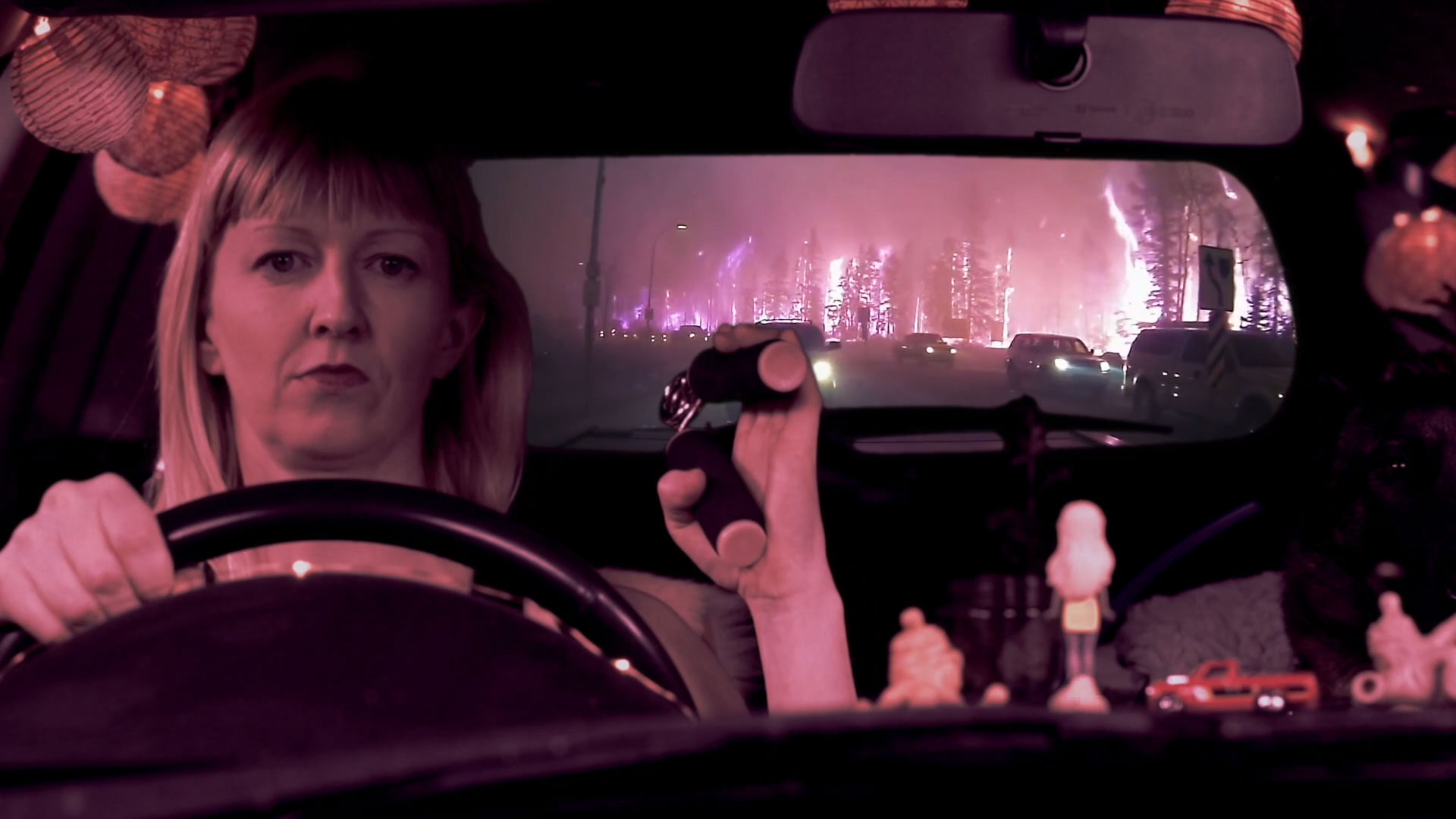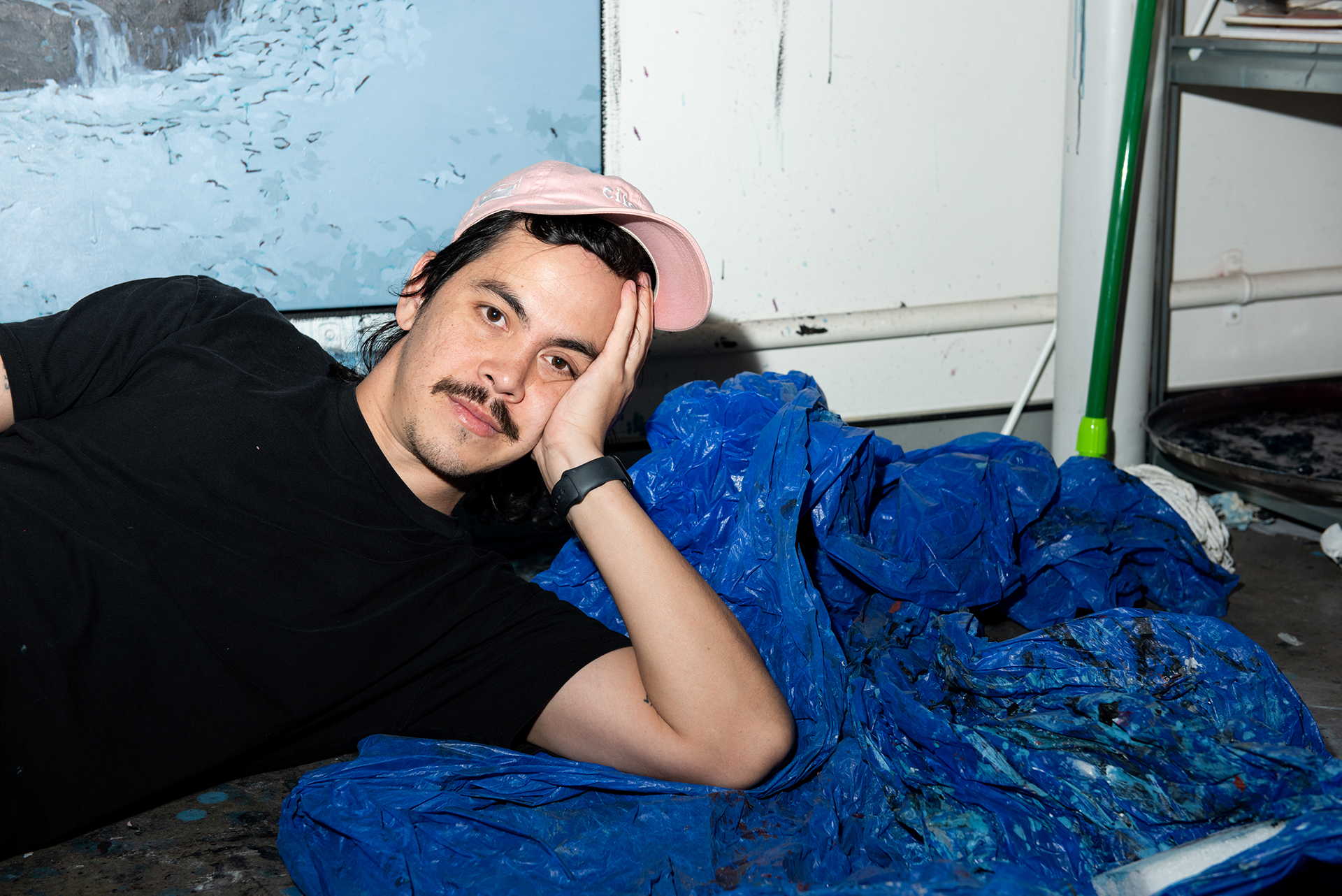Tarryn Gill’s towering “Limber” sculptures return our gaze
The soft and expanding hand-stitched bodies, complete with eyes in unsuspecting places, protest the objectification that has made the feminine feel powerless.
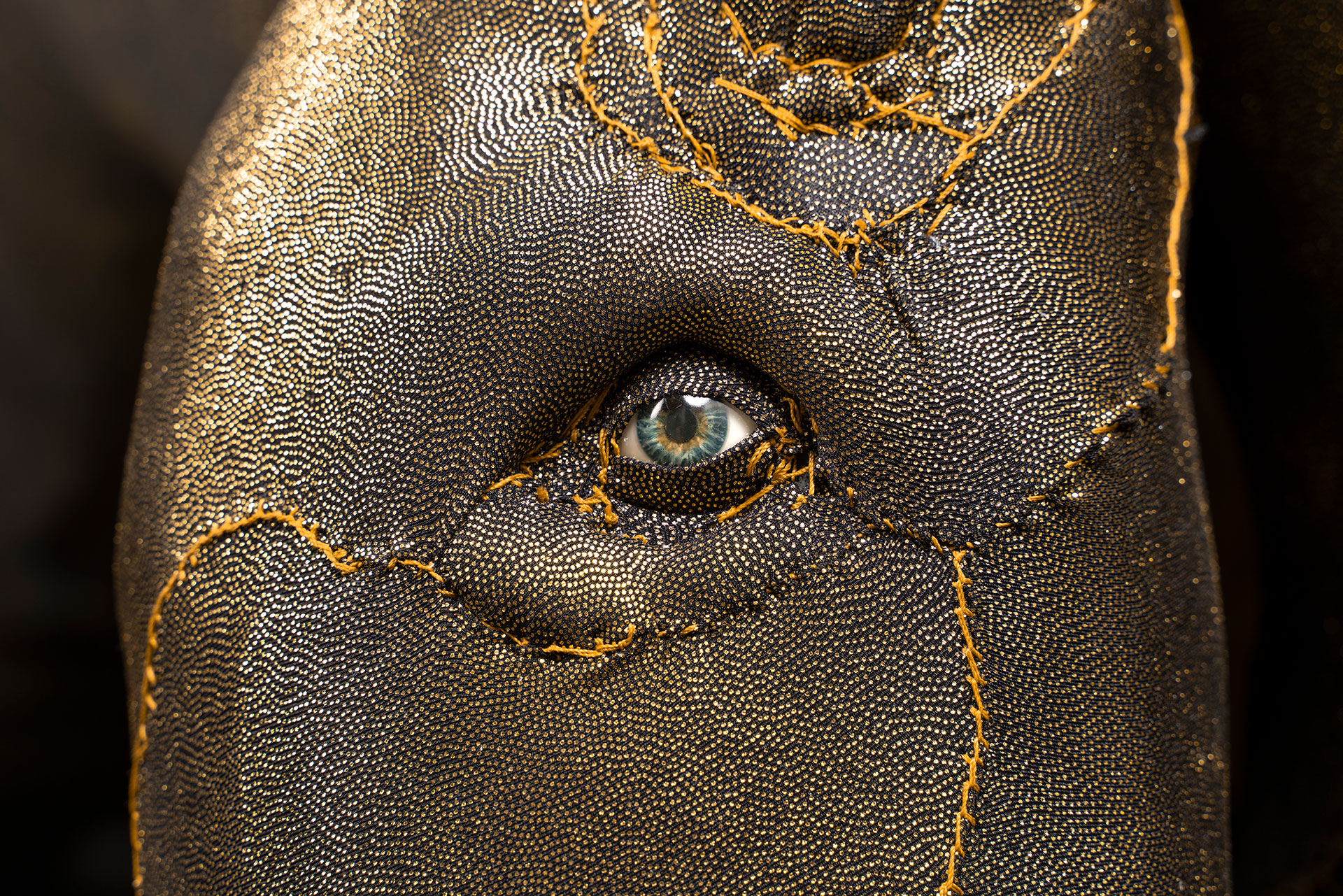
Tarryn Gill Limber 1 2020. Mixed media (hand-stitched Lycra, EPE foam & fibre fill, artificial eyes, steel), 110 x 370 x 125 cm. State Art Collection, Art Gallery of Western Australia. Purchased through the Art Gallery of Western Australia Foundation: TomorrowFund, 2021. Photography by Pixel Poetry.
TWISTING, REACHING AND BENDING, the three monumental figures in Tarryn Gill’s Limber series demand our attention. Sprawling out across the gallery floor, these soft sculptural works lure the viewer in to witness the body. There is a spirit of curiosity required to take in these enormous silhouettes, to trace the lines of rough stitching, and to comprehend the contorted forms.
These captivatingly expressive sculptures are Gill’s largest to date, taking eight months to make. Inspired by her training in competitive calisthenics and dance, Limber mines the aesthetic, materials, and theatrics of this world. The work subverts what is considered “girly” and flamboyant, with Gill re-appropriating lowbrow costumes into something striking and powerful. The figures are covered in sparkling flesh-toned lycra, imitations of skin and supple muscle that personify the sculptural works as the female form. These folding, stretching, and splitting sculptures replicate the stressful positions assumed during calisthenics.
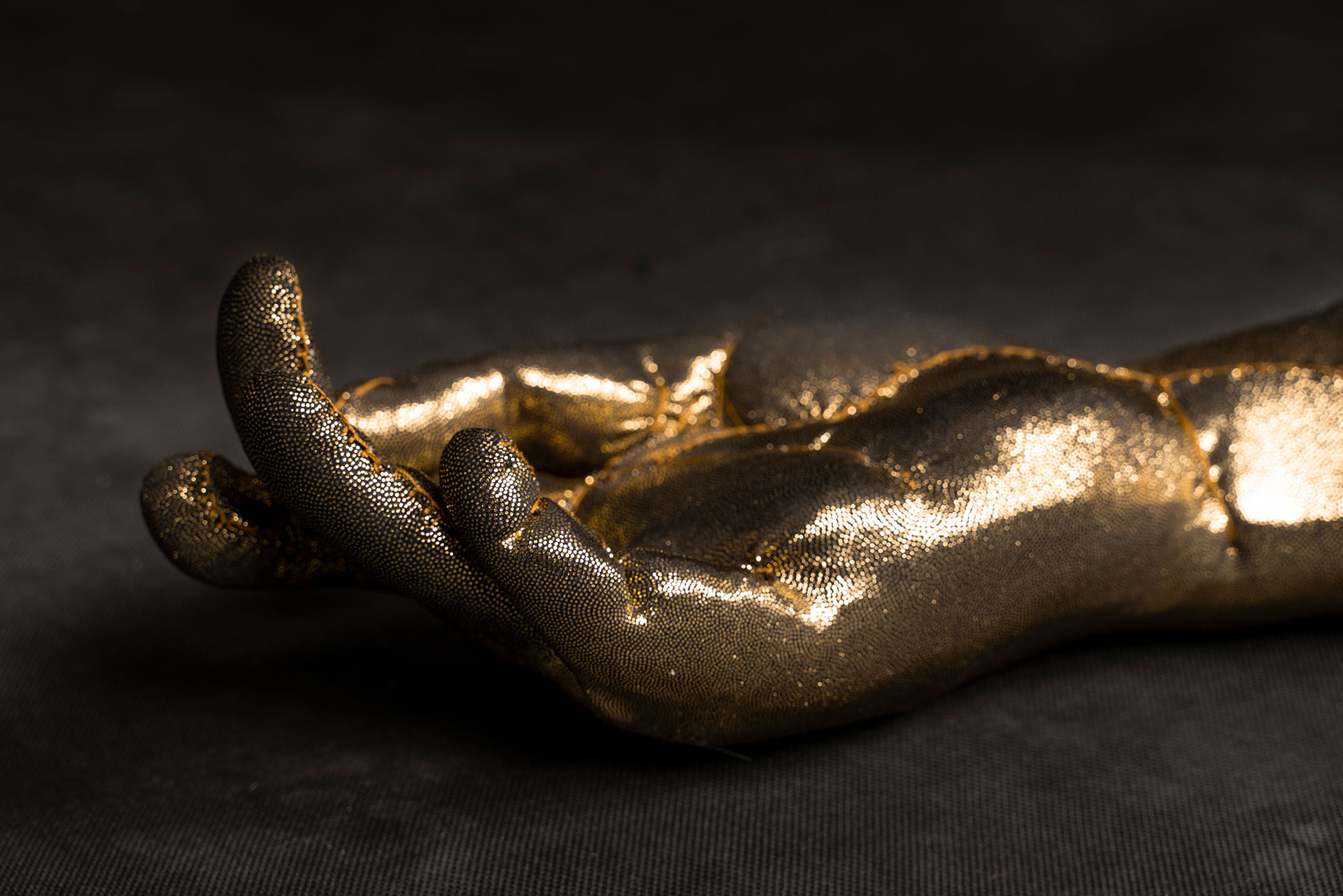
Tarryn Gill Limber 1 2020. Mixed media (hand-stitched Lycra, EPE foam & fibre fill, artificial eyes, steel), 110 x 370 x 125 cm. State Art Collection, Art Gallery of Western Australia. Purchased through the Art Gallery of Western Australia Foundation: TomorrowFund, 2021. Photography by Pixel Poetry.
For Gill, Limber is a response to the objectification and harassment she experienced as a female athlete.
“I was reflecting about my own body and expanding on it, thinking about my younger self and wanting to empower that body to feel self-possessed in the world as a young woman,” she says.
Drawing on elements of the performing body, the male gaze, and the monstrous feminine, Gill embraces a dark humour to reclaim the feminine force. These exaggerated sculptures are not passive receivers of inspection, they are powerful expanding bodies meeting the audience’s examination. Eyes stare back at us from palms, elbows, hips and crotches, disrupting our spectatorship. By returning the gaze, these figures confront the authority of the viewer.
“Eyes symbolise power for me in meeting the male gaze. It is life, imagining that different parts of the body can come alive and take agency,” she says. “Most performance positions are very crotch-centric and the positions of my sculptures are very in-your-face. My decision to use eyes was to stare back at the viewer. Mostly it is men who find the work weird, subconsciously confronted that the female bodies were looking back at them when they didn’t expect it.”
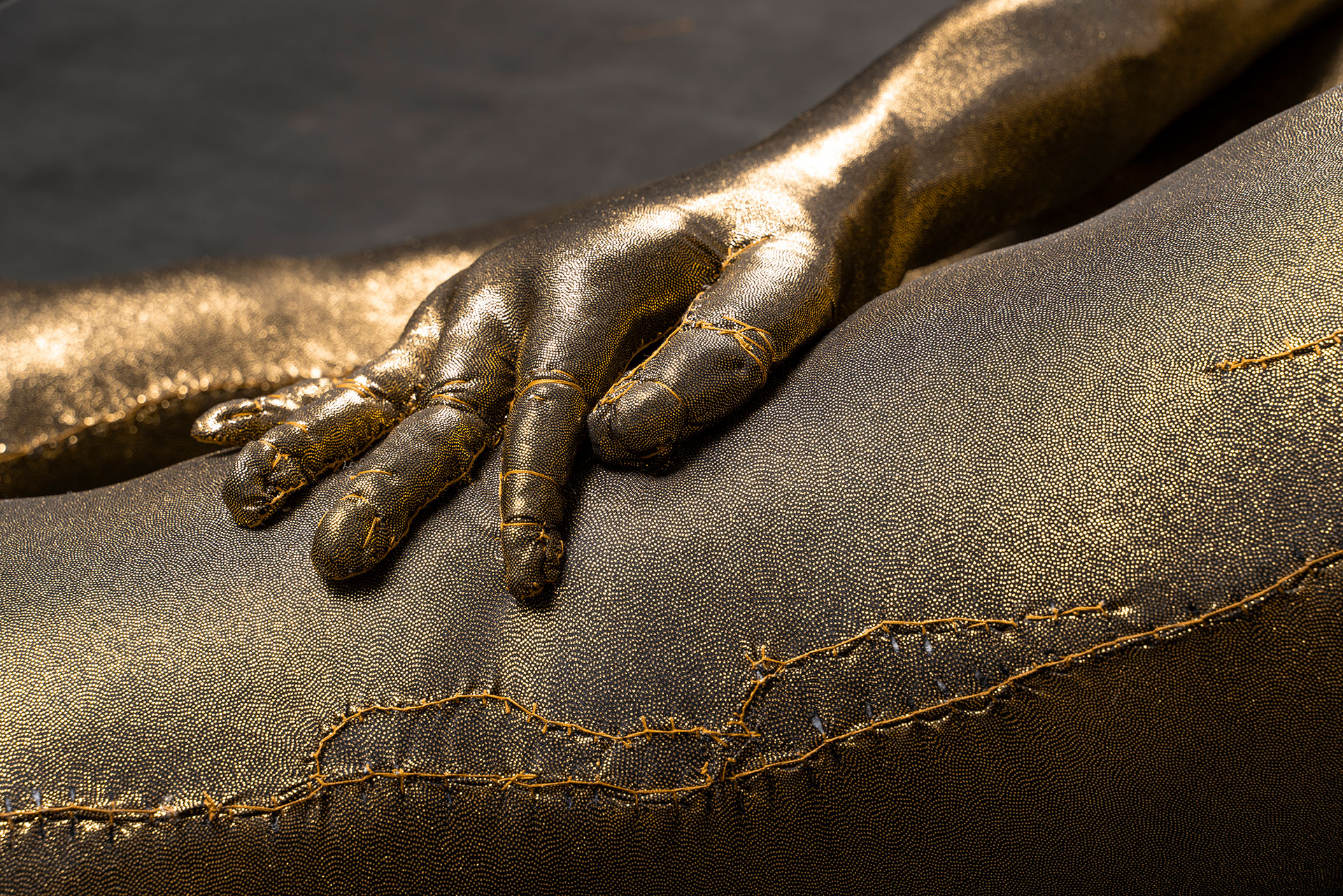
Tarryn Gill Limber 1 2020. Mixed media (hand-stitched Lycra, EPE foam & fibre fill, artificial eyes, steel), 110 x 370 x 125 cm. State Art Collection, Art Gallery of Western Australia. Purchased through the Art Gallery of Western Australia Foundation: TomorrowFund, 2021. Photography by Pixel Poetry.
Women have traditionally been minimised as objects for observation. Presented as creatures for the male view, women are positioned as the bearers for meaning, never the makers of meaning. Shyness has long been considered a virtue of femininity, training girls to avert their eyes so to allow for the male gaze to take authority, reducing women to objects on to which value is projected. This objectification robs women of their freedom and agency.
The female sculptures in Gill’s Limber series rebel against these idealised standards of femininity. Towering, expanding and staring, these figures ignore any obligation of decorum, asserting their femininity in a darkly powerful and uncanny way. The gaze becomes a battleground as the spectator becomes part of the spectacle. By collapsing the distinctions between the looked-upon and the looking, Gill reclaims the body with agency and resistance.
In defiance against objectification, Gill’s Limber series celebrates the female body as a site for empowerment, growth and self-expression. By daring to return the gaze and making a point of staring hard, Limber challenges the power dynamic to which we’ve grown accustomed, forcing us to see differently.
This article was first published in the print publication The View From Here in October 2021 under the title Return Our Gaze.
